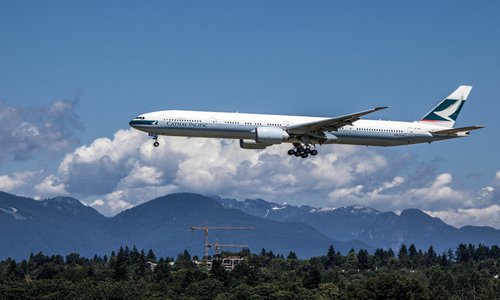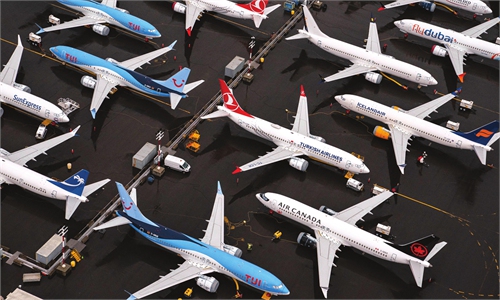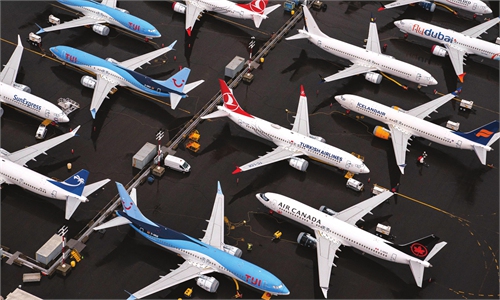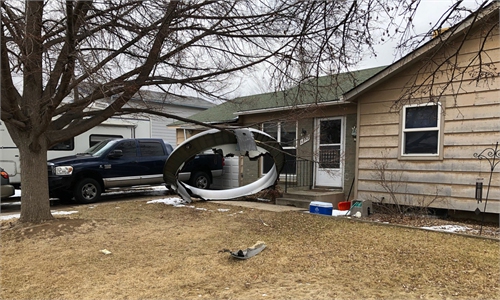
Boeing 777, Cathay Pacific Airways, landing at YVR. Canada.
Civil Aviation Administration of China (CAAC) told the Global Times on Monday that they had taken notice of the engine failure accident of a Boeing aircraft powered by WP4000 engine in the US on Saturday.
CAAC said China has no in-service civil aircraft or cargo aircraft with same model of aircraft and engine and will continue to monitor developments in the US.
Media had earlier reported that the right-side engine of a Boeing-777 aircraft of United Airline flight 328 from Denver to Honolulu failed, and caught fire during its return to Denver International Airport, and the parts of the engine fell off to the ground. United Airlines announced on Sunday that 24 boeing-777-200 aircrafts powered by the same engines were suspended operation after the accident.
Boeing released a statement on Sunday that the company recommends airlines suspend the operation of 69 in-service and 59 in-storage Boeing-777s powered by Pratt & Whitney 4000 engines.
On December 4, 2020, a Boeing-777 aircraft used by Japan Airlines (JAL) that was the same age as the 26-year-old United Airlines aircraft involved in the latest accident took off from Naha Airport of Okinawa and had to return to airport due to engine malfunction. The Ministry of Land, Infrastructure, Transport and Tourism of Japan required JAL and All Nippon Airway (ANA) to suspend the operation of the aircraft of the same model following the accident in US.
Wang Yanan, editor of Beijing-based Aerospace Knowledge magazine, told Global Times that the similarities of the two incidents showed that the aging PW4000 engines may be accelerated at the end of its service life.
"PW4000 series is a classic aircraft engine produced by one of the most famous company, the Pratt & Whitney Company, which has a prolonged service of around three decades now," said Wang.
Wang stressed that the accident is possibly caused by the aging engine not the Boeing-777 aircraft and the maintenance of United Airline may have flaws.
Wang also noted that the two accidents were a warning to the industry to monitor the WP4000 engines' security.



